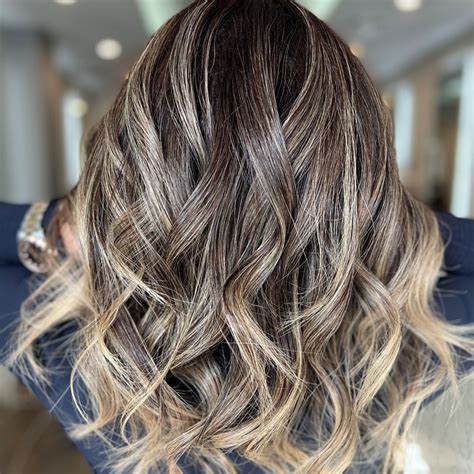When it comes to transforming your locks with color, two popular techniques emerge: balayage and highlights. While both methods aim to enhance your hair’s natural radiance, they differ in their application, effect, and maintenance requirements. This comprehensive guide will delve into the nuances of balayage and highlights, empowering you to make an informed decision for your hair color journey.

Balayage: A Sun-Kissed Glow
Originating in France, balayage translates to “to sweep.” This technique involves the hand-painted application of color to the hair, creating a seamless blend from roots to ends. With balayage, the focus is on creating natural-looking, sun-kissed highlights that enhance your hair’s texture and movement.
Benefits of Balayage
- Low-Maintenance: Balayage requires less frequent touch-ups compared to traditional highlights, as the color grows out with a subtle, ombré effect.
- Natural Look: Balayage emulates the way the sun naturally lightens hair, resulting in a soft and blended look that complements your skin tone.
- Dimension and Texture: By strategically placing color, balayage adds depth and dimension to your hair, creating an illusion of fullness and movement.
Highlights: A Classic Technique for Precision
Highlights, also known as foils, involve the sectioning of hair and applying bleach or color to specific strands. This technique offers more control over the placement and intensity of the highlights.
Benefits of Highlights
- Precise Color Placement: Highlights allow you to target specific areas of your hair for a more dramatic effect.
- Intense Color: Highlights can create a bolder, more noticeable change in hair color compared to balayage.
- Customization: Highlights can be tailored to your desired level of intensity, from subtle streaks to full-on platinum blonde.
Key Differences: Balayage vs. Highlights
| Feature | Balayage | Highlights |
|---|---|---|
| Application Method | Hand-painted | Sectioned and foiled |
| Effect | Natural, sun-kissed | Precise, bolder |
| Maintenance | Low-maintenance | Requires frequent touch-ups |
| Dimension | Adds depth and texture | Creates contrast and impact |
| Color Placement | Gradual blend | Isolated strands |
| Cost | Generally higher | Generally lower |
Choosing the Right Technique for You
The choice between balayage and highlights ultimately depends on your personal preferences and hair goals. Here are some considerations to help you decide:
- Natural Look: Balayage is ideal for those seeking a low-maintenance, blended look.
- Dramatic Change: Highlights offer bolder results and more precise color placement for a more noticeable transformation.
- Hair Texture: Balayage is suitable for all hair types, while highlights may be better suited for finer hair due to their potential drying effect.
- Lifestyle: If you prefer a more hands-off approach, balayage may be a better fit due to its low maintenance requirements.
Market Trends and Customer Appeal
According to a recent study by Allied Market Research, the global hair color market is projected to reach $24.46 billion by 2026, with a growing demand for natural-looking hair color solutions. This aligns with the popularity of balayage, which offers a subtle and blended effect.
Customers are increasingly seeking hair color techniques that enhance their natural features and complement their personal style. Both balayage and highlights fulfill this need, offering a wide range of customization options to suit individual preferences.
Conclusion
Balayage and highlights are versatile hair color techniques that can transform your locks in different ways. Balayage offers a natural, sun-kissed effect, while highlights provide more precise color placement and bolder results. Understanding the key differences between these techniques will empower you to make an informed decision for your hair color journey, achieving the desired look that enhances your individual style and beauty.
